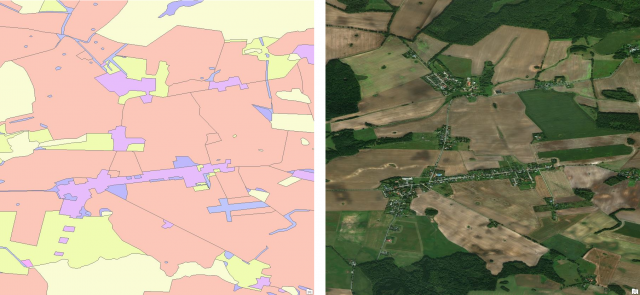Landscape structure
Landscape structure is the composition of different elements of the landscape. An element can be determined according to different criteria. Depending on the research question, a landscape element can, for example, describe a specific land use (see Fig. 2) or clearly delimitable landscape forms. The smallest homogeneous landscape element is called patch.
Since a landscape always consists of several patches, depending on the viewing level, their position in relation to each other is also a part of the landscape structure. On the one hand, it is the composition of different patches and the arrangement of the patches that makes up the landscape structure or gives a concrete landscape its characteristics. On the other hand, the composition and arrangement of the patches have an influence on which processes take place in a landscape and how they interact. This in turn can also lead to new structures in the landscape.
Therefore, it should be noted that the totality of the patches of a landscape and their relationship to each other describes a landscape structure. Essentially, the recording of the landscape structure is about the pattern that is visible when looking from above ("horizontal structure").
The horizontal structure describes the planar spatial structure of elements in a landscape. It is used in most cases in the calculation of landscape metrics.
In Fig. 3 the different horizontal landscape structures are clearly visible. In Iowa the landscape structure is very ordered (regular), whereas in Germany and Mecklenburg-Western Pomerania the landscape structure appears rather disordered.


